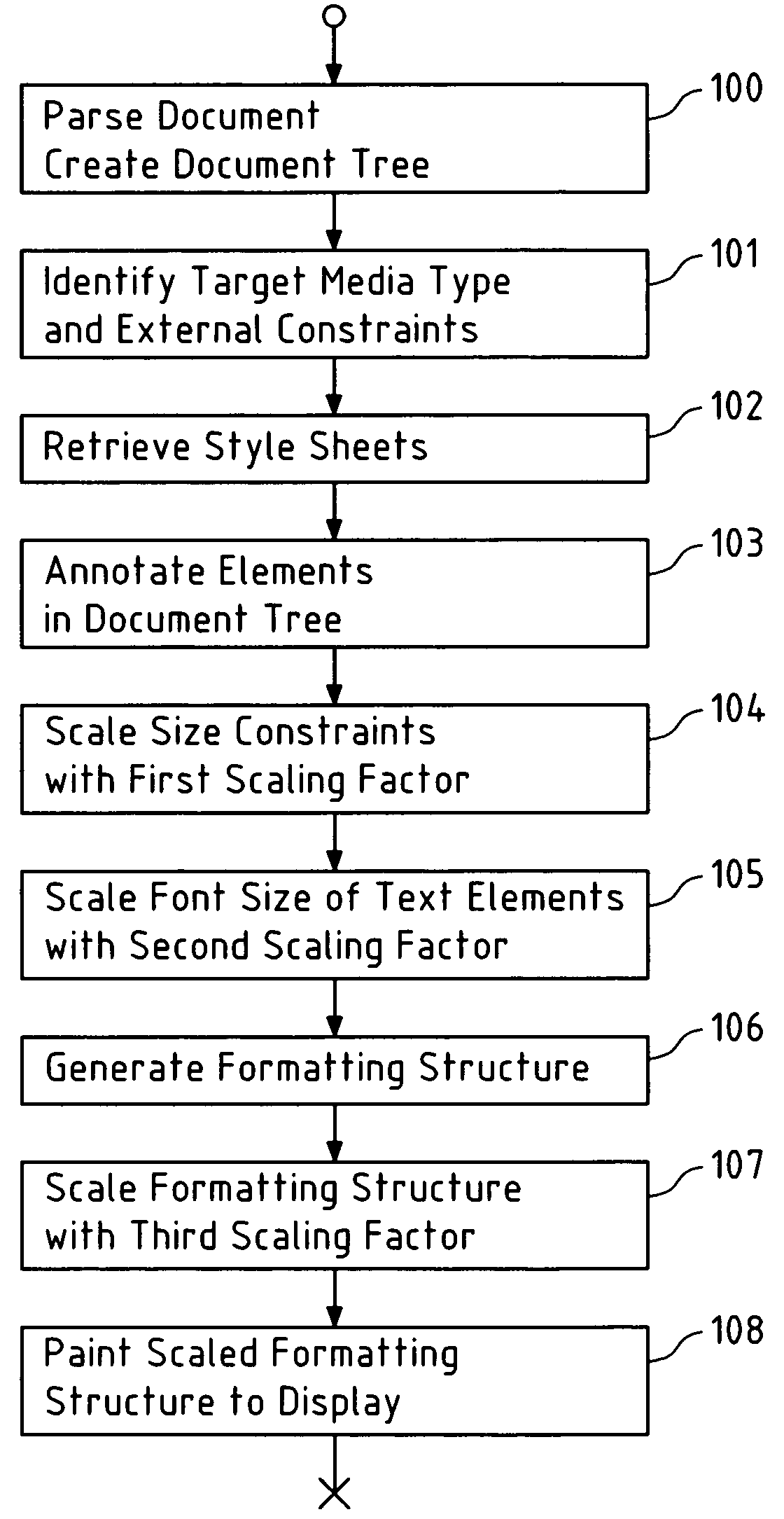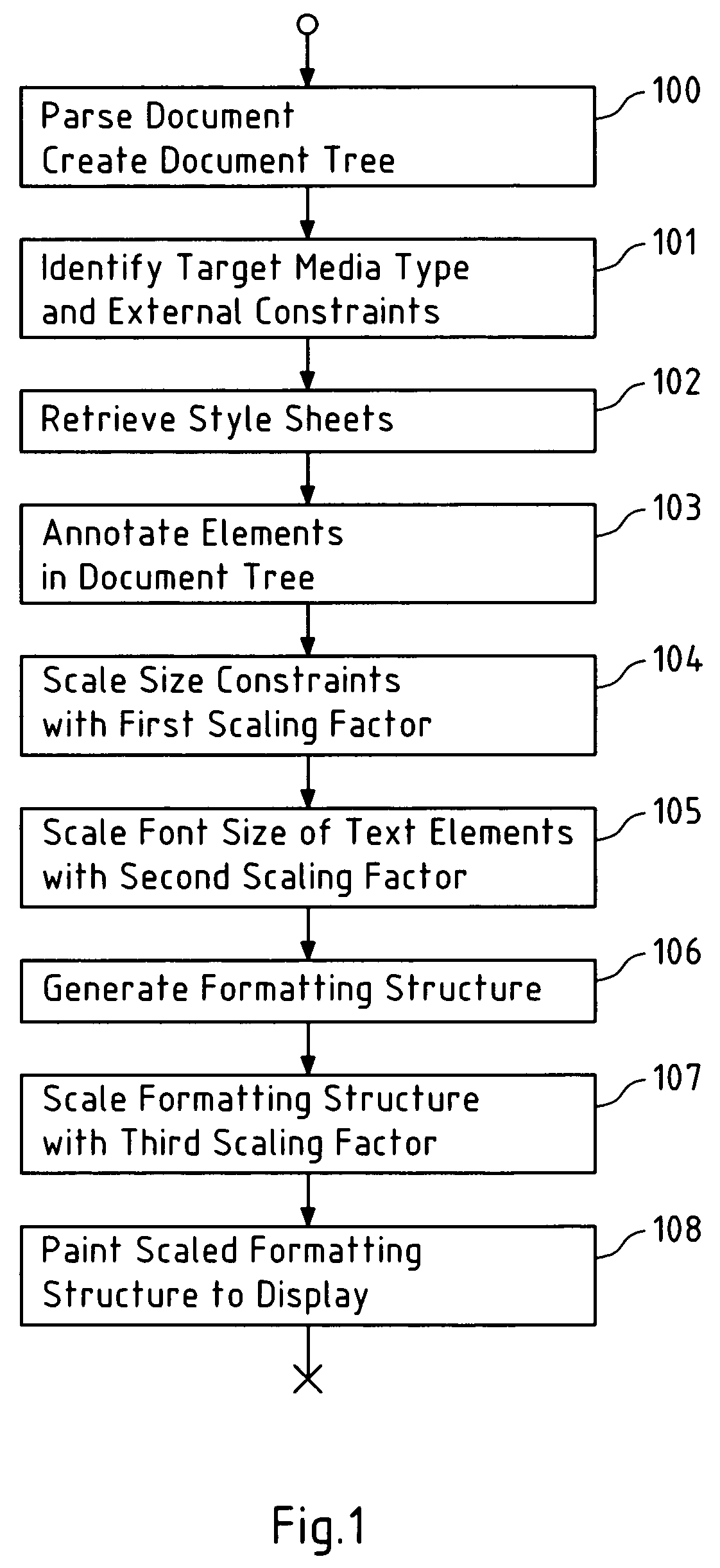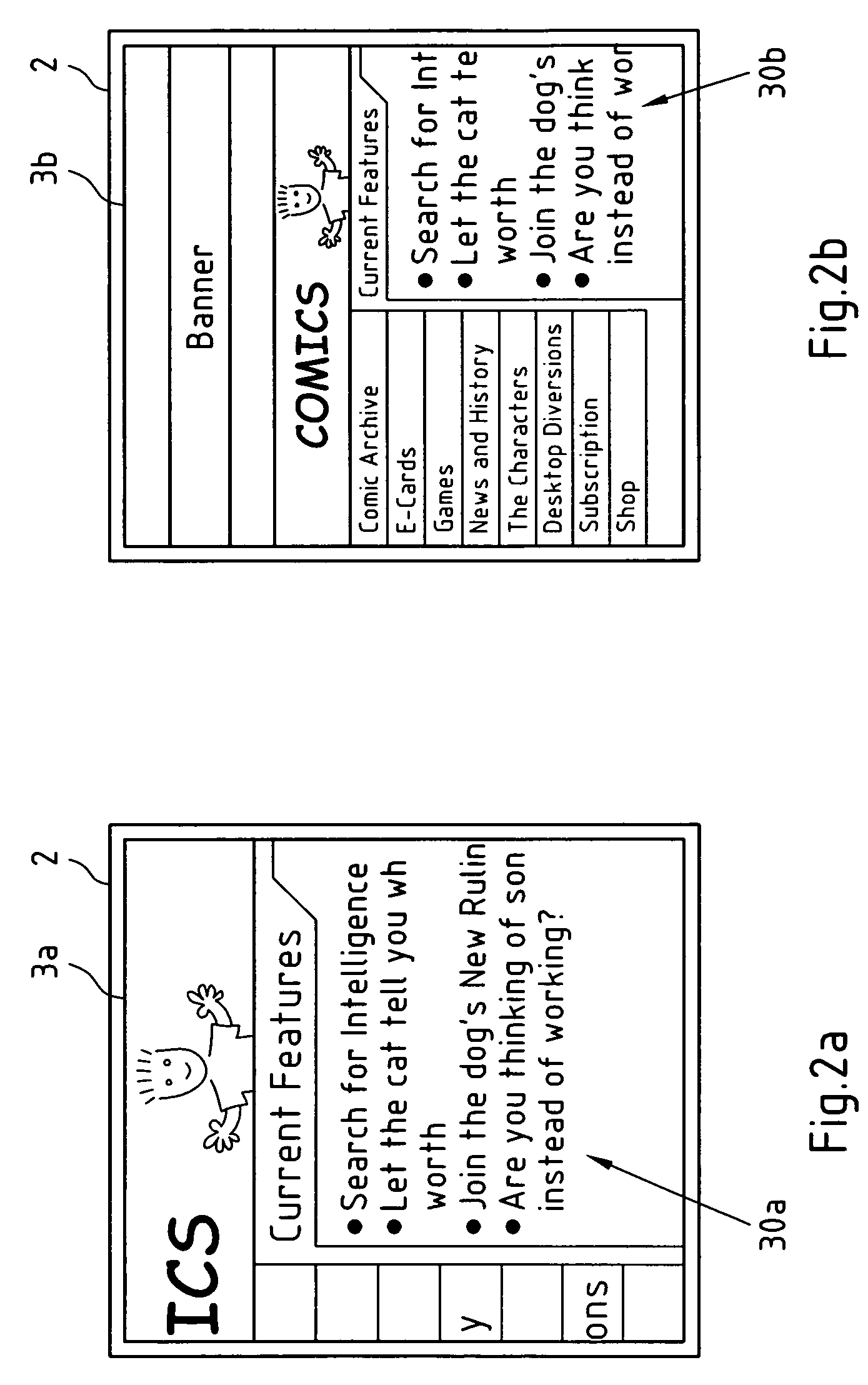Presentation of large objects on small displays
a technology for large objects and small displays, applied in the field of large objects on small displays, can solve the problems of reducing the display area, destroying the original design intent of the web document, and limiting the minimum width of the box, so as to reduce the layout area and increase the display area
- Summary
- Abstract
- Description
- Claims
- Application Information
AI Technical Summary
Benefits of technology
Problems solved by technology
Method used
Image
Examples
first embodiment
[0078]FIG. 1 depicts a flowchart of the present invention. The steps of this flowchart may for instance be performed by a browser in a hand-held multimedia device (e.g. a mobile phone or a PDA) to render a document (e.g. an internet document written in HTML) on the display of said device.
[0079]In a first step 100, the browser parses the document and generates a document tree, in which the elements of the document, e.g. images, texts, or similar elements, are hierarchically arranged.
[0080]In a second step 101, the browser then identifies the target media type to which said document is to be rendered, which in this exemplary case is the display of said hand-held multimedia device. The browser also identifies the external constraints associated with said target media type. In case of a display as target media type, said external constraints are size constraints of an available display area (also denoted as view port) on said device, in particular the width and height of said available ...
second embodiment
[0104]FIGS. 3a and 3b illustrate the effect that can be achieved when a size constraint is relaxed by detaching the size constraint from the physical width of the available display area according to the present invention. Therein, it is assumed that the second and fourth scaling factors are equal, and that said third scaling factor is a reciprocal value of said second and fourth scaling factor. Equally well, all of said second, third and fourth scaling factors may be equal to one.
[0105]In the upper part of FIG. 3a, a portion of a scaled formatting structure 4a is displayed on the available display area of a display 2. Said scaled formatting structure 4a comprises three columns 4a-1, 4a-2 and 4a-3, of which only the centre column 4a-2 is shown in more detail. The complete scaled formatting structure 4a is depicted in smaller scale in the lower part of FIG. 4a.
[0106]Therein, also the portion of said scaled formatting structure 4a that is displayed in the display area 2 (see upper par...
third embodiment
[0113]the present invention targets that a user does not need to scroll sideways to read multi-line text paragraphs. To this end, the inline layout algorithm (e.g. the CSS2 inline layout algorithm), which is performed within the formatting process, is modified so that inline text is formatted to the width defined by the scaled size constraint (e.g. the width of the available display area or view port scaled by said first scaling factor), if said width defined by the scaled size constraint is narrower than the width of a box that is determined for a text paragraph during the formatting process according to a box model, for instance the CSS2 box model. This approach aims at ensuring that text is formatted to the width defined by the scaled size constraint, even if the text box generated for said text during the formatting process is wider than said width defined by said scaled size constraint.
[0114]The third embodiment of the present invention breaks formatting models as for instance ...
PUM
 Login to View More
Login to View More Abstract
Description
Claims
Application Information
 Login to View More
Login to View More - R&D
- Intellectual Property
- Life Sciences
- Materials
- Tech Scout
- Unparalleled Data Quality
- Higher Quality Content
- 60% Fewer Hallucinations
Browse by: Latest US Patents, China's latest patents, Technical Efficacy Thesaurus, Application Domain, Technology Topic, Popular Technical Reports.
© 2025 PatSnap. All rights reserved.Legal|Privacy policy|Modern Slavery Act Transparency Statement|Sitemap|About US| Contact US: help@patsnap.com



